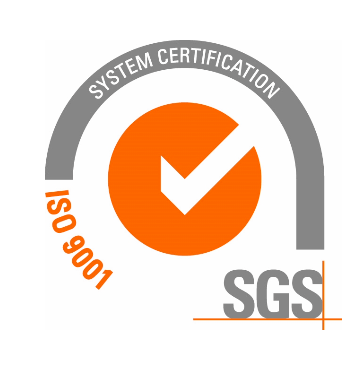Learn about 5 essential inventory management techniques to streamline your eCommerce business.

Inventory management is an essential part of any eCommerce business.
Put simply, it's all about making sure you have enough product to meet demand, while also keeping associated costs to a minimum. Effective inventory management increases sales, reduces the cost of held inventory, and leaves your customers feeling happy and better served.
However, it can be easier said than done – so here are a few essential techniques that will help you make the most of inventory management.
1. Demand forecasting
Every business should be doing demand forecasting – in other words, predicting what will sell and having enough of it.
As Steve Jobs famously said about customer demands, "Our job is to figure out what they're going to want before they do". Get this right and you'll know what inventory you'll need to match what customers want, when they want it and how much they want of it.
Demand forecasting can help you manage your inventory by helping you make efficient reordering and restocking choices. It can also help reduce storage costs, backorders and out-of-stock events.
There are many, many ways to approach demand forecasting – but they all look to achieve the same thing: generate predictions about customer demand.
This process can be done passively, by combining data previously collected by the business with other data sets and making judgements based on the patterns and trends that emerge. An active approach, on the other hand, might involve making customised assessments that match each situation.
We've also seen a huge increase in artificial intelligence and machine learning-based methods – as well as examples of companies using software like enterprise resource planning (ERP) systems that incorporate automated forecasting.
Other methods include basing your forecasting on short-term or long-term predictions, each with varying degrees of accuracy.
You might also incorporate data collected from and about the customer (micro-level or internal forecasting). Or you might consider larger trends, such as how well a particular industry is performing or how competition might be driving profit margins up or down. This is known as "macro-level" or "external" demand forecasting.

Going into any more detail about this complicated but essential aspect of inventory management would require a whole other article, so it's a good idea to do some research and see what will work best for you. Whatever you use will be down to the unique needs of your business. Most likely, you'll use a combination of demand forecasting methods.
2. Safety stock
Something you always want to avoid as an eCommerce business is being out of stock. After all, this means potentially turning down eager customers.
One way to avoid this happening is to store an extra quantity of a popular product as a protection against sudden demand surges or inaccurate market forecasts.
Having more of a particular item can help during a particularly busy time or the festive season – and it can serve as a buffer if there are longer lead times than expected with a supplier. This can also protect your business against the price fluctuations that can occur due to unpredictable markets, scarcity of materials or new government measures.
You can determine what to keep as safety stock based on customer demand, delivery lead times, the potential loss due to stockouts and the cost of holding the item.
The main disadvantage of safety stock is the cost. It can be expensive to hold inventory for an extended time – and there's the possibility of waste if your item doesn't sell. Be careful if you decide to stock up on seasonal items. No one wants to buy a Christmas jumper in January!
3. ABC analysis
ABC analysis is another popular inventory management technique. It involves sorting inventory into three categories based on their importance to your business. This can help you prioritise which items you need to order and store, and what items will require oversight.

By gathering and analysing data on the sales history, cost and inventory levels of items, you then sort them into the following groups:
- A items: the most important items in your inventory. They account for 20% of your inventory items and up to 80% of the inventory value.
- B items: these account for 30% of the inventory items and about 15% of the inventory value. They are of medium importance.
- C items: the least important items. They account for 50% of the inventory items but only around 5% of the inventory value.
This can lead to better decision-making, especially when you have identified what your "A products" are. It can also help businesses unlock cost savings by focusing on the items that make them the most money and avoiding unnecessary stocking and ordering of items they don't need.
However, ABC analysis can be difficult and time-consuming to implement. It also doesn't take into account demand patterns, seasonal demands or lengthy lead times.
4. Reorder points
This is an essential part of inventory management. Quite simply, it's the point at which you reorder stock.
Knowing when to replenish your stock will avoid stockouts – and ordering when you have zero stock means you're at the mercy of lead times before you can fulfil a customer order. Reorder points help you optimise your inventory by making sure you order in time to meet market demands before going out of stock.
It's important that you calculate reorder points accurately, taking into account lead times, the amount of safety stock and the number of sales in a day of an item (the daily average usage).
Reorder points don't really have a disadvantage – unless you miscalculate them and end up with surplus stock to store.
5. Inventory management software
An honourable mention has to go to the various inventory management software packages currently on the market. Software can help you consolidate and optimise your inventory management, as well as help make the whole process far more efficient.
Though they can be expensive, and it may take you some time to familiarise yourself with them, they could well save you money and time in the long run.
Some well-known packages include Cin7, Ordoro, inFlow and Zoho Inventory.
Stowsafe offers a completely bespoke fulfilment service that can take into account clients' inventory management strategies, allowing a seamless link between the customer and your business.
Get in touch today to find out how the UK's most flexible
fulfilment company can help you.
All Rights Reserved | Stowsafe Fulfilment














